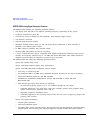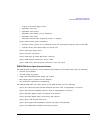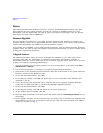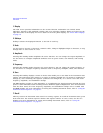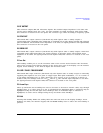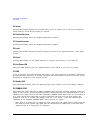
Chapter 1 5
Signal Generator Overview
Modes of Operation
NOTE If the PSG’s dynamic host configuration protocol (DHCP) is enabled, the network assigns the
instrument an IP address at power on. Because of this, when DHCP is enabled, the IP
address may be different each time you turn on the instrument. DHCP does not affect the
hostname.
12. Click Browse, and double-click the firmware revision to upgrade your signal generator.
13. In the Upgrade Assistant, click
Next.
14. Once connection to the instrument is verified, click
Next and follow the on-screen prompts.
NOTE Once the download starts, it cannot be aborted.
NOTE When the User Attention message appears, you must first cycle the instrument’s power, then
click OK.
When the upgrade completes, the Upgrade Assistant displays a summary.
15. Click
OK and close the Upgrade Assistant.
Modes of Operation
Depending on the model and installed options, the PSG signal generator provides up to four basic
modes of operation: continuous wave (CW), swept signal, analog modulation, and digital modulation.
Continuous Wave
In this mode, the signal generator produces a continuous wave signal. The signal generator is set to
a single frequency and power level. Both the E8257D and E8267D can produce a CW signal.
Swept Signal
In this mode, the signal generator sweeps over a range of frequencies and/or power levels. Both the
E8257D and E8267D provide list and step sweep functionality. Option 007 adds analog ramp sweep
functionality.
Analog Modulation
In this mode, the signal generator modulates a CW signal with an analog signal. The analog
modulation types available depend on the installed options.
Option UNT provides amplitude, frequency, and phase modulations. Some of these modulations can be
used together. Options UNU and UNW provide standard and narrow pulse modulation capability,
respectively.








